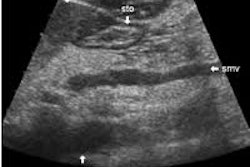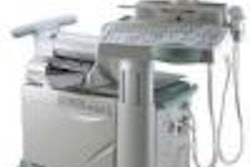(Ultrasound Review) A recent study published in American Journal of Roentgenology compared real-time spatial compound sonography with conventional musculoskeletal (MSK) ultrasound imaging.
According to radiologists at Thomas Jefferson University Hospital in Philadelphia, "real-time spatial compound sonography significantly improved sonographic image quality in the musculoskeletal system when compared with conventional high-resolution sonography."
Spatial compound sonography is a relatively new technique that uses multiple, differing angles of insonation to create an ultrasound image. This form of image compounding reduces image noise and speckle, and increases tissue plane definition.
"As the image is generated from more angles of insonation, the likelihood is greater that one of these angles will be perpendicular to specular reflectors, generate a higher echo amplitude, and thereby reduce anisotropic effects," they said.
Fifty-nine image pairs were digitally stored and reviewed by sonologists. Images of both normal anatomy and pathology using conventional ultrasound and compounded imaging were compared, and an assessment of image quality was made.
"Each image was rated for definition of tissue planes, amount of speckle and other noise, and image detail using a 5-point scale: 1, unacceptable; 2, poor quality but marginally acceptable; 3, fair quality and acceptable; 4, good quality; and 5, excellent or outstanding quality," they reported.
According to the results, "an analysis of variance revealed that real-time spatial compound sonography significantly improved definition of soft-tissue planes, reduced speckle and other noise, and improved image detail when compared with conventional high-resolution sonography."
Compound imaging requires more lines of sight resulting in lower frame rates and reduced temporal resolution. In MSK imaging, the structures being imaged were still and superficial, and so did not cause significant image degradation. When dynamic imaging is performed they suggested that higher frame rates should be selected.
They concluded, "spatial compound sonography reduces image artifacts and thereby improves tissue-plane definition. Because musculoskeletal sonography is highly dependent on image quality and tissue-plane definition, real-time spatial compound sonography represents an important development in the field."
Advantages of real-time spatial compound sonography of the musculoskeletal system versus conventional sonographyLin, D et al
Division of ultrasound, department of radiology, Thomas Jefferson University Hospital, Philadelphia, PA
AJR 2002 December; 179:1629-1631
By Ultrasound Review
December 17, 2002
Copyright © 2002 AuntMinnie.com



















